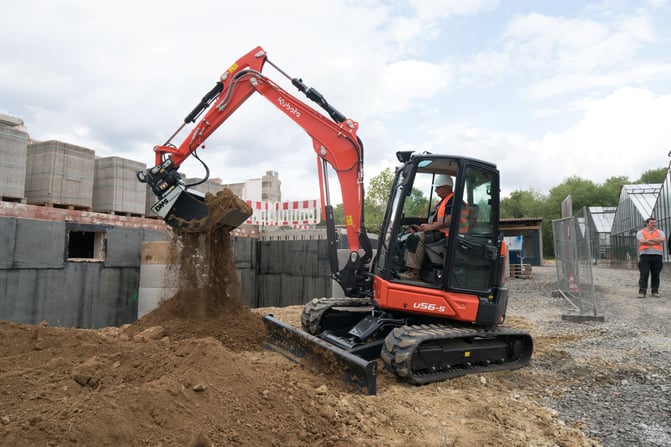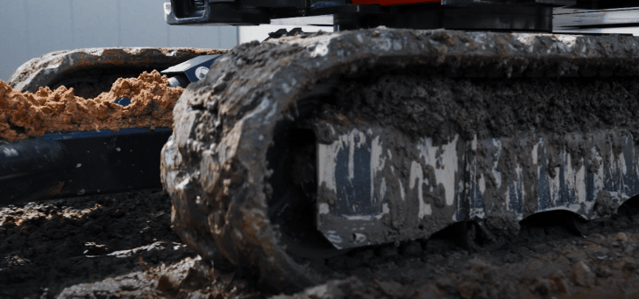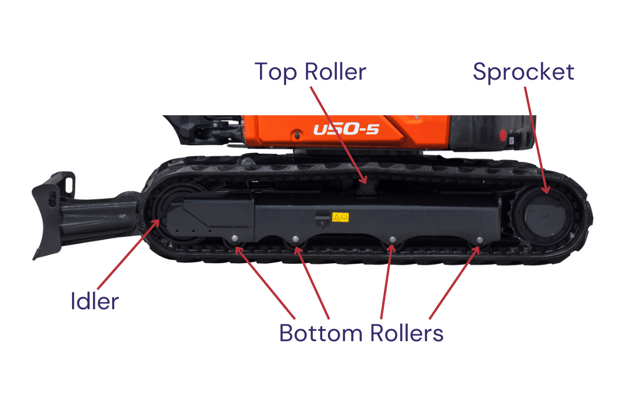Kubota excavators are known for their versatility, durability, and reliability. They are ideal for a wide range of applications, including digging, grading, trenching, demolition, and more. However, like any other heavy machinery, Kubota excavators require regular maintenance and occasional repairs to keep them running smoothly and efficiently. One critical component that should never be overlooked are the rubber tracks.
Rubber tracks are a crucial part of any excavator as they provide traction, stability, and support to the machine. They are especially vital for working on uneven or rough terrain, as they help distribute the weight of the excavator and prevent damage to the surface.
Here are some reasons why maintaining and replacing your Kubota excavator's rubber tracks is essential:
1. Improved Performance
Over time, rubber tracks can wear out or become damaged due to prolonged use or exposure to harsh conditions. This can affect the excavator's overall performance, causing it to move slower, less efficiently, or less safely. Regular maintenance and inspections of your rubber tracks can help identify and address any issues before they become more severe.
2. Increased Safety
Worn or damaged rubber tracks can compromise the safety of the operator and other workers on the construction site. They can cause the excavator to lose stability or traction, leading to accidents or injuries. By keeping your rubber tracks in good condition, you can ensure that your Kubota excavator operates safely and effectively.
3. Longevity of the Machine
Regular maintenance and replacement of rubber tracks can help extend the lifespan of your Kubota excavator. By replacing worn-out tracks with genuine Kubota parts, you can ensure that they are the correct size and specification for your machine. Using high-quality, authentic parts can also reduce the risk of premature wear or damage, thus minimising repair costs and downtime.
4. Reduced Environmental Impact
Rubber tracks are more environmentally friendly than steel tracks, as they produce less noise and vibrations and cause less damage to the ground. By maintaining and replacing your rubber tracks as needed, you can help minimize the environmental impact of your excavator and promote sustainable practices.

When to Change Your Kubota's Rubber Tracks
Knowing when to change your Kubota excavator's rubber tracks is essential to maintaining the machine's safety and performance. Some signs that it may be time to replace your rubber tracks include:
1. Wear and Tear
Over time, the rubber tracks will wear down, and the lugs on the tracks will become less defined. When this happens, the tracks will start to slip on smooth surfaces, reducing the machine's traction.
2. Cracks and Split
Cracks and splits can occur on your tracks for a number of reasons including overloading the excavator, operating on rough terrain, exposure to extreme temperatures, exposure to chemicals or corrosive substances, or simply because of age. Cracks and splits can lead to further damage and pose a safety risk if not addressed.
3. Tension
Proper tension is crucial for the performance and longevity of the tracks. If the tracks are loose, they will wear down more quickly and may come off while operating. But, if they're too tight, they'll put more stress on the machine's undercarriage.
4. Uneven Wear
If you notice that the tracks are wearing unevenly, it may be a sign of an alignment issue. This can cause premature wear on one side of the track, and lead to costly repairs if not addressed.
5. Age
Even if there's no visible damage, rubber tracks that have been in use for a long time will eventually need to be replaced. The lifespan of the tracks will depend on factors like usage, terrain, and maintenance.
Check your tracks daily
It is recommended to check your Kubota excavator’s rubber tracks regularly for the above signs. Your daily machine walk round inspection should include the tracks. If you notice any of these issues during routine inspections or while operating your excavator, it's essential to carry out a full inspection of the tracks to access the extent of wear or damage.
If the damaged tracks cannot be repaired or they are significantly worn then it is important they are promptly replaced. Continuing to work with damaged tracks can lead to further damage to the machine including the undercarriage and other components.
Installing new tracks can take a lot of time and manpower. Additionally, they must be properly aligned and tensioned. This is why it is always recommended to use a reputable Kubota dealer. Here at BTE, we have trained service engineers and workshop engineers that know how to correctly change your rubber tracks. We can come to you on-site, therefore reducing the downtime of your machine.
How to Maintain your Rubber Tracks
There are ways to help extend the life of your rubber tracks, saving both time and money. Kubota provides specific recommendations for maintaining your tracks which will ensure optimal performance and longevity.

Here are some general tips:
- Regularly clean your tracks with a high-pressure washer or hose to remove dirt and debris
- Lubricate the moving parts of the undercarriage such as the idlers, rollers, and sprockets to reduce friction
- Regularly check the tension of your tracks
- Avoid making sharp turns when operating your excavator
- Regularly inspect your tracks for wear and damage

Following these simple maintenance tips can help keep your machine running optimally and reduce unnecessary wear.
You can also refer to the operator’s manual for specific recommendations and instructions for your particular model.
Want more help?
Get in touch with our Aftersales Department today and we can help you!
